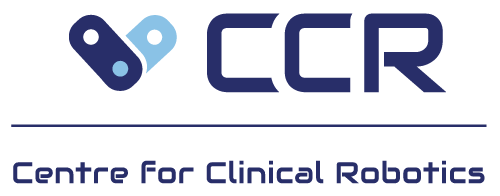ARUS – Robot for scanning of pregnant people (2025-2027)
The maternity and obstetrics area does not have the resources to keep up with the demand for scans of pregnant people. A shortage of sonographers and an increasing number of complex scans lead to increased workload in a physically demanding field. Sonographers are at high risk of work-related musculoskeletal disorders (MSDs), and increased workload exacerbates the risk.
PROJECT PERIOD
Start: August 2025
End: October 2027
Studies show that 64-90% of sonographers report MSD. A Danish study has also shown that 98.1% of foetal medicine sonographers experienced MSD. Especially experienced sonographers who have been scanning for many years experience MSD. It is especially the shoulder that is exposed, but also the neck, upper and lower back, elbow, wrist and fingers. MSD can lead to reduced functional capacity, reduced quality of life, reduced work capacity, increased sick leave and early withdrawal from the labour market. In Denmark, foetal medicine sonographers now scan part-time as a rule to reduce the risk of MSD.
AIM
The purpose of the project is to relieve sonographers' physical strain and thereby reduce the risk of musculoskeletal disorders by testing robot-assisted scanning of pregnant people. The expectation is that the relief can reduce MSD, which in the long term can potentially reduce sick leave and staff turnover.
The research project is the first to test a CE-marked robot, ARUS, for robot-assisted scanning of pregnant people. It will be conducted as a randomised intervention study at two test sites in clinical practice, where 20 sonographers will scan a total of 60 pregnant people - with and without the robot, which is controlled with a 3D joystick.
The primary outcome is the effect of robot-assisted scanning on muscle activity compared to manual scanning. In addition, scanning time with stressful working positions with and without robot-assisted scanning will be examined. The project will also investigate early economic aspects of operating the robot in the hospital, how the robot is included in and affects workflows, the sonographers' experiences and relationship with the robot, the pregnant people and their relatives, and the pregnant people and their relatives' experiences with and relationship with the robot and the sonographer.
Testing the robot could be of great international interest, as the project is the first to test a robot for scanning pregnant people - such a robot could potentially help solve a challenge that is faced on a global scale. The robot is also compatible with all scanning probes. In practice, the hospital's existing probes are simply mounted on the robot. This means that the robot can potentially be used in connection with, for example, lung, heart, bladder and kidney scans. Robot-assisted scanning can therefore potentially physically relieve sonographers in many specialties.
PARTNERS
- Department of Gynaecology and Obstetrics, Odense University Hospital
- Department of Gynaecology and Obstetrics, Aalborg University Hospital
- University of Southern Denmark, including the Research Unit of Physical Activity and Health in Working Life and the Department of Business & Management
- The HTA Unit, Department of Clinical Development, Odense University Hospital
EXTERNAL FUNDING
The project has received funding from the Danish Working Environment Research Fund.

Malte Kongstad Deleuran
Innovation Consultant
Odense University Hospital, Department of Clinical Development - Innovation, Research & HTA
(+45) 2165 7146 mkd@rsyd.dk

Pernille Kirkegaard Ovesen
Innovation Consultant
Odense University Hospital, Department of Clinical Development - Innovation, Research & HTA
(+45) 2497 4744 pernille.kirkegaard.knudsen@rsyd.dk
